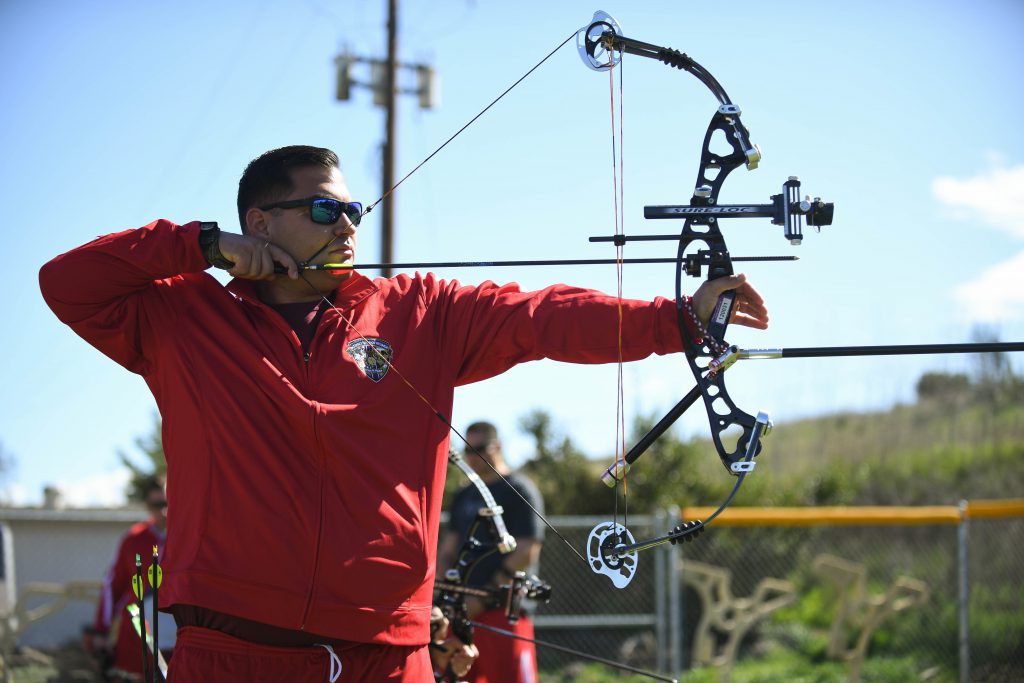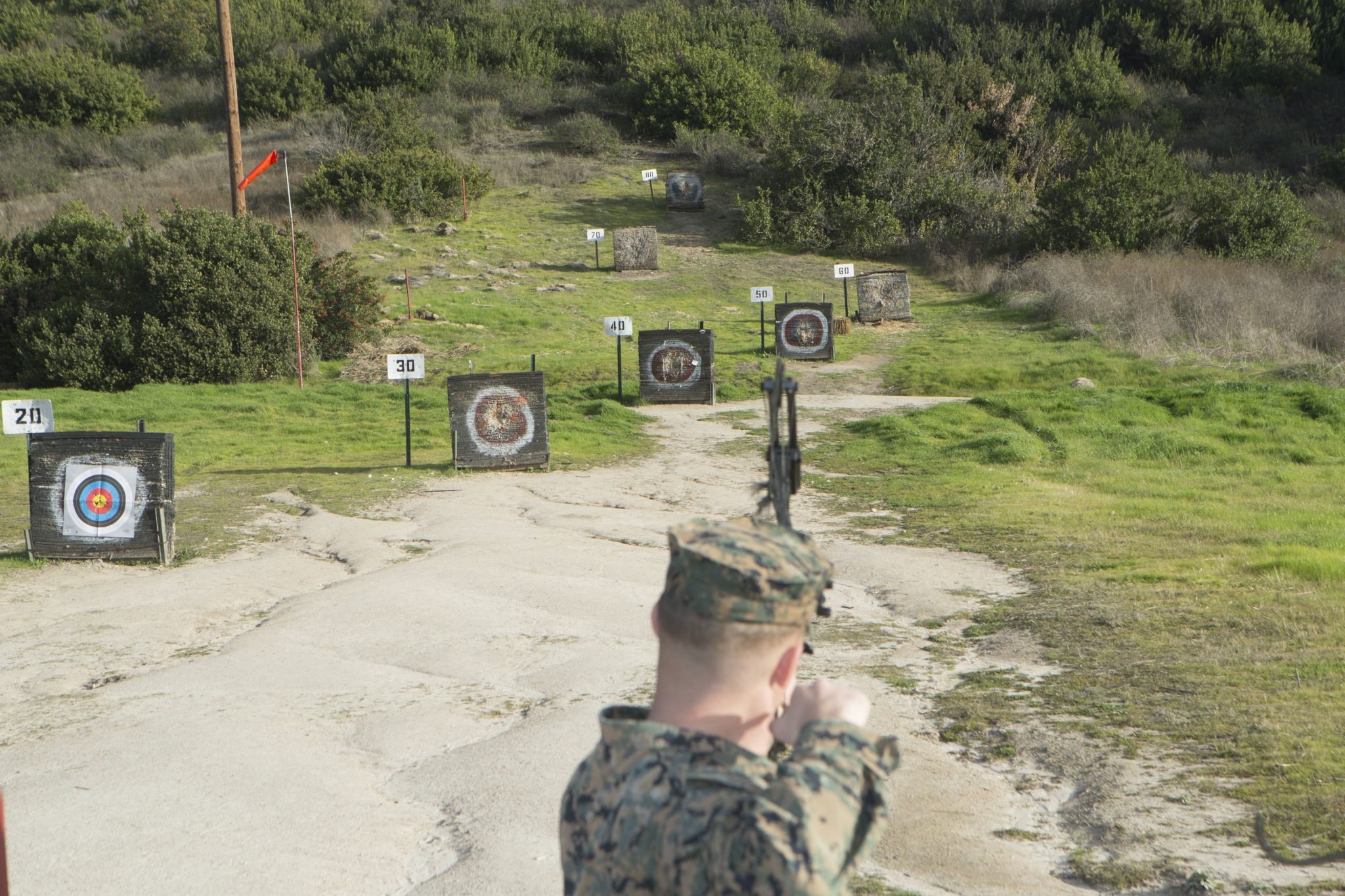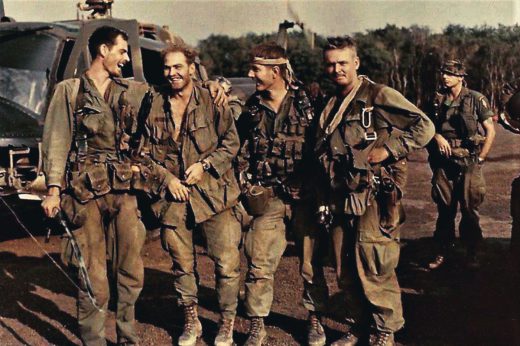CAMP PENDLETON, Calif. — Appreciation and understanding of various weapon systems are a part of Marine culture. Typically, the M16 or the M240 are the first to come to mind. However, there is a more traditional weapon system being utilized by Marine Corps Base Camp Pendleton personnel, and it has fostered a culture of its own.
The bow and arrow is one of humankind’s earliest weapon systems. It has been employed for combat and hunting for thousands of years by cultures across the world and across time. Tapping into this heritage, archers reconnect with the legacy left behind by the warriors and hunters that came before them.
“Hunting is not about killing. It’s about everything that leads up to, and after, the harvest of an animal,” stated Michael Tucker, chief game warden, Game Warden’s Office, Marine Corps Installations West, Marine Corps Base Camp Pendleton. “Archery allows people to spend more time hunting than traditional firearm hunting.”
Traditional archers practice the sport with the more primitive versions of a bow that have become iconic. The types of bows most commonly used are the longbow and recurve bow. With limited modern advancement made to these bows, archers rely on traditional techniques to shoot accurately. These methods are considered enjoyable due to the increased challenge that comes with using this type of equipment. Modern archers will often take up traditional archery methods to challenge themselves once they have grown confident with the contemporary versions.
“I prefer to teach archers to shoot a recurve bow in order to learn good form and technique,” stated Jason Conner, secretary of the Camp Pendleton Sportsman’s Club, USA Archery level 3 NTS coach, Certified National Judge, and 40-Year Member of the National Field Archery Association. “Using good biomechanics and solid alignment almost always helps a compound archer shoot better, and shooting recurve really drives it home.”
Modern archers rely on advanced versions of this traditional weapon system, most commonly the compound bow. The compound bow uses a pulley system that allows the archer to shoot arrows at faster speeds without increasing the difficulty of drawing the bow. The compound bow is also highly adaptable with stabilizers, peep sights, and sound dampening possibilities. Although this equipment may be more advanced, the fundamentals of archery must be practiced and understood to shoot effectively.
“I have always preferred shooting the compound bow, mainly because that is what I grew up shooting,” said Lance Cpl. Karsten Jagielski, floor mechanic, 1st Maintenance Battalion, Combat Logistics Regiment 15, 1st Marine Logistics Group. “I favor the compound bow because it is effective at longer distances and a more ethical weapon in most situations in the field.
Any day that training areas are not in use by the military, archers may participate in bowhunting. Archers simply need to contact the Game Warden’s Office for this information and to be cleared for the hunt. The base supports archers by providing this information on weekly basis on the game wardens webpage located on pendleton.marines.mil.
“Hunting is not about killing. It’s about everything that leads up to, and after, the harvest of an animal. Archery allows people to spend more time hunting than traditional firearm hunting.”
The base also supports archers by providing two different ranges for shooters to practice. The Las Flores and Rattlesnake Canyon archery ranges allow on base archers scenic facilities to practice the sport they love, free of charge. Thanks to the Sportsman’s club, which maintains these ranges, no fees or reservations are required for Camp Pendleton personnel to participate in the sport.
“Both of the ranges are used quite a bit, but the Las Flores range is new and growing in popularity,” stated Tucker. “All that is required is that you follow the regulations posted at the ranges.”
Many on-base archers rely on these ranges to become better hunters. With the added difficulties that come with archery hunting, archers dedicate their time to become as proficient as possible with their preferred archery method. These on-base archery ranges serve as community centers where all types of archers can come together and share knowledge on all aspects of the archery tradition.
“While being stationed on Camp Pendleton, the archery range has been a great outlet for me to be able to get out of the barracks and away from the shop,” said Jagielski.
With these conveniently located areas, archers can be seen after work or on weekends clearing their minds by letting arrows fly. As is the case with many other focus activities, archers can exercise their spiritual fitness while improving their skills with a bow and arrow. Coming together with others from the sport allows for social opportunities that can clear the mind through this shared passion.

“There is something primal about shooting something at distance with a stick and a string and watching the flight of the arrow as it strikes the intended target,” stated Conner. “Bow hunting takes it up another level by adding the field craft required to get close to a wild animal, the marksmanship required to harvest it under less than ideal conditions, and the ethics and self-mastery to not take an uncertain shot.”
Patience and dedication are virtues strengthened by practicing the sport of archery. Thousands of repetitions are required to become and stay efficient in this craft. These values are instilled in Marines early in their careers and must be developed over time.
“Shooting my bow has benefited me in many ways,” stated Jagielski. “It makes you focus on all the minor details that, in the moment, may seem very insignificant. Yet, when everything comes together, those minor details can determine whether you are successful or unsuccessful in the field.”
The technology may change, but the fundamentals remain the same. Archery has been passed down to generations and is now a sport of focus and skill.
Offering helpful advice to newcomers is a common occurrence on the two archery ranges. Carrying on a tradition of learning and teaching to become as proficient as possible and strengthening both the bonds of fellow active-duty Marines and other on-base archers as well.
The legacy left behind by ancient archers is sustained by those who participate in it. Whether archery is practiced as a means for hunting or for the joy of the sport itself, the pursuit of mastering these ancient methods drives a culture that has bonded Marines for years.
This article was originally published July 14, 2020, on Marines.mil.








Comments